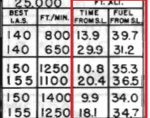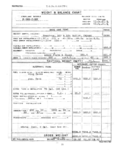buffnut453
Captain
When I did those calculations I tried to be as conservative as possible to show minimal fuel consumption so we can determine range, especially for the P-39 but the charts from the flight manual speak for themselves. I wanted to show the source instead of flapping numbers without a mention of fuel consumption. As I was doing the calculations it became apparent that a mission to 25,000' was not the best profile for the P-39
Heyyy....wait a minute!!! I've just figured out the primary role for the YB-40. It was to escort the P-39. The YB-40 as heavily armed, and could fly at higher altitude to protect the P-39 from being bounced from above. It also had longer operating range so it could loiter over the entirety of the P-39 mission.
Sounds like a war-winner to me!!!




